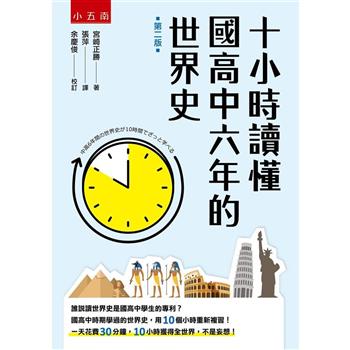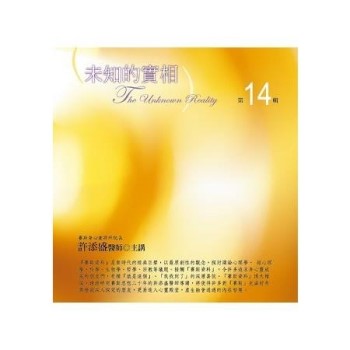CHAPTER 1
INTERNATIONAL HEALTH AND THE RIGHT TO HEALTH
1.The Concept of Health
2.The Concept of International Health Matters
3.The Recognition of a Human Right to Health
4.Controlling Infectious Diseases Being an Obligation to Protect the Right to Health
CHAPTER 2
INTERNATIONAL HEALTH INSTRUMENTS PIOR TO IHR (2005)
1.The Legislative Power of WHO
2.The Age Prior to the Enactment of the IHR (1969)
3. The Enactment of the IHR (1969)
4. Some Features of the IHR (1969)
5. Achievements and Problems with the IHR (1969)
CHAPTER 3
FROM IHR (1969) TO IHR (2005)
1.The Need to Respond More Actively to the Trend of Globalization and to Make IHR More Effective
2. Decisions on the Revision of the IHR
3. Different Drafts before the Final Version
4. Particular Areas of Improvement and Their Implications
5. The Adoption of the IHR (2005) and Early Voluntary Compliance
6. Purpose and the Scope of IHR (2005)
CHAPTER 4
THE SOVEREIGNTY CLAUSE AND ITS IMPLEMENTATION
1. The Sovereignty Clause Serving as a Guiding Principle
2. The Interaction between International Health and Sovereignty
3. The Need of Giving Less Weight to Sovereign Power
4. Proper Interpretation of Article 3, paragraph 4
5. U.N. Charter and WHO Constitution Serving as Guidance
CHAPTER 5
IMPLEMENTATION PRINCIPLES: THE RESPECT OF HUMAN RIGHTS AND THE PRINCIPLE OF UNIVERSALITY
1.Respecting Human Right and Human Dignity as an Implementing Principle
2.Other IHR (2005) Provisions Supporting Human Rights
3.Public Health Measures Affecting Human Rights
4.Balancing between Human Rights and the Adoption of Health Measures to Infringe Human Rights
5.Universal Application as an Implementing Principle
6.The Relations between the Universal Application and Other Paragraphs in Article 3
7. Future Implementation of the Universal Application
CHAPTER 6
PUBLIC HEALTH EMERGENCY OF INTERNATIONAL CONCERN
1.Different Kinds of Diseases
2.The Identification of Infectious Disease to Trigger the Measures: the Meaning of “Public Health Emergency of International Concern”
3.Method of Treating these Diseases under the IHR (2005)
4.The Decision Instrument
5.Example: the Novel Influenza in 2009 as a Public Health Emergency of International Concern
6.Negative Examples: Applying the Decision Instrument to HIV/AIDS and XDR-TB
CHAPTER 7
NATIONAL FOCAL POINTS AND WHO CONTACT POINT
1. Designation of National IHR Focal Points (NFP)
2.“National IHR Focal Point Guide”
3. WHO IHR Contact Point
CHAPTER 8
IMPROVING PREPAREDNESS THROUGH STRENGTHENING NATIONALINFRASTRUCTURE: CORE CAPACITIES OF STATE PARTIES
1. Capacity to Detect, Assess, Notify and Report PHEICs
2. Capacity to Respond Public Health Risks
CHAPTER 9
SURVEILLANCE AND RESPONSE MECHANISMS UNDER IHR (2005)
1.Institutional Arrangement for the Interaction between State Parties and WHO
2. Information Processing Stage
3. Decision Making Stage
4. Response Stage
5. Response Resources Administered by WHO
6.Institutional Arrangement within WHO: Roster of Experts, the Emergency Committee and the Review Committee
CHAPTER 10
RECOMMENDATIONS
1. Criteria for both Temporary and Standing Recommendations
2. Temporary Recommendation
3. Standing Recommendation
4. “Pandemic Influenza Preparedness and Response Guidance”
5. Recommendations with respect to persons, baggage, cargo, containers, conveyances, goods and postal parcels
CHAPTER 11
POINTS OF ENTRY
1. General obligations
2.The Designation of Airports and Ports
3.Ship Sanitation Control Exemption Certificates and Ship Sanitation Control Certificates
4. Ground Crossings
5. Role of Competent Authorities of Points of Entry
CHAPTER 12
PUBLIC HEALTH MEASURES
1. General Rules Concerning Health Measures on Arrival and Departure
2. Special Provisions for Conveyances and Conveyance Operators
3. Special Provisions for Travellers
4. Special Provisions for Goods, Containers and Container Loading Areas
CHAPTER 13
HEALTH DOCUMENTS, CHARGES AND IMPLEMENTATION OF HEALTH MEASURES
1. Health Documents
2. Charges
3. Implementation of Health Measures
4. Collaboration
5. Treatment of Personal Data
6. Treatment of Biological Substances
CHAPTER 14
RELEASE OF BIOLOGICAL, CHEMICAL AGENTS OR RADIONUCLEAR MATERIAL AND IHR (2005)
1.Diseases Caused by Intentional Release of Biochemical Materials: Bioterrorism
2. International Efforts in Dealing with Bioterrorism
3.WHO Decisions in the Areas of Biological or Chemical Agents and Radio-nuclear Materials
4.Debates about Whether to Include Diseases Caused by Biological, Chemistry and Radio-nuclear Materials
5.Natures of Diseases Arising from Bioterrorism and Those of Natural Epidemics
6. Bioterrorism under IHR (2005)
CHAPTER 15
RELATIONS WITH OTHER TREATIES, STATE PARTIES, DISPUTE SETTLEMENT AND ENTRY INTO FORCE
1. Compatibility with Other International Agreements
2. Special Treaties between Particular State Parties
3. State Parties
4. Making a Rejection
5. Making Reservations
6. Various Reservations and Declarations
7. Withdrawal of Rejection or Reservations
8. A State not a Member of WHO to Become a State Party of the IHR (2005)
9. DG’s Notification of the Adoption and Amendments of IHR (2005)
10. Ensuring the Implementation and Compliance of the IHR (2005)
11. Amendments
12. Dispute Settlement
INDEX












